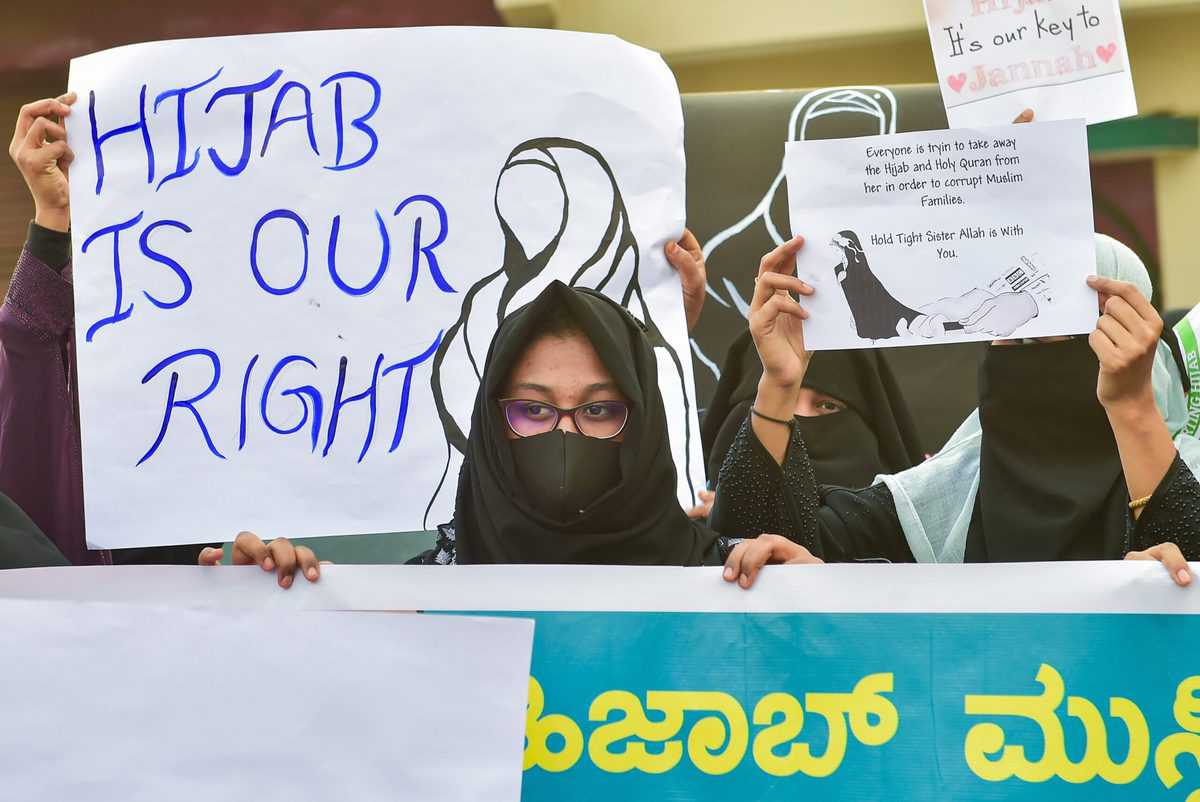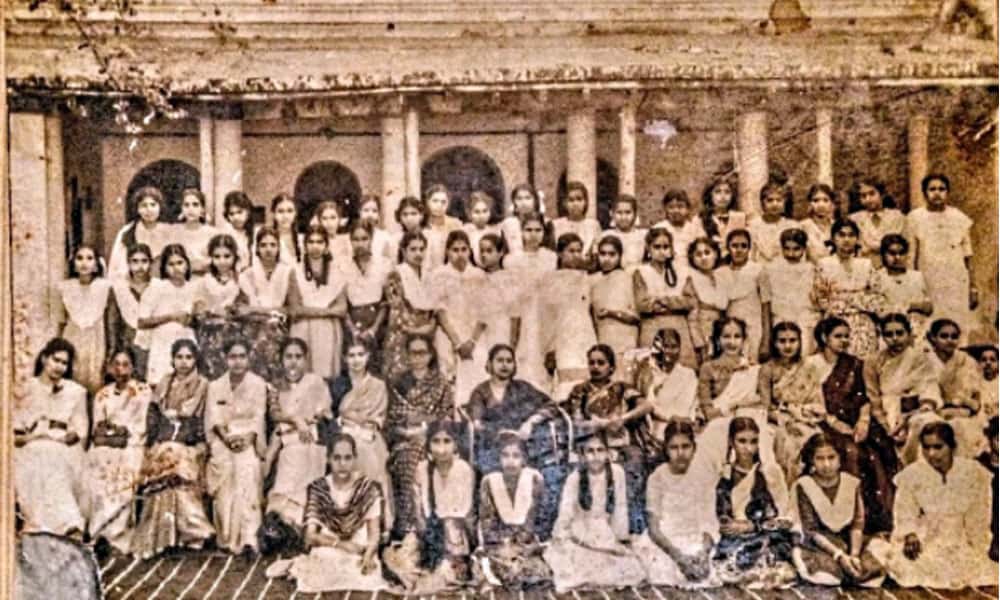
By Maleeha Fatima
I do not speak for all Muslim women, but for many of us, in whatever Institution we go to for higher education in this country, we often find ourselves as the token Muslim woman, a stranger that invokes the curiosity of her peers, one that is expected to answer all their questions about Islam and be a silent audience to their patronizing critique of Islam.
One whose every choice is assumed to be either an enforced restriction or an act of rebellion, never just a simple choice. One who everyone takes a shot at trying to save, or liberate. Gendered Islamophobia and mild forms of discrimination against Muslim women in the higher education spaces of India has, since the past few decades, been a growing concern. Through the Hijab ban in colleges of Karnataka and a potential imminent nationwide ban, this discrimination has assumed a very direct form.
The ban, its unconstitutional nature and its sinister attack on the fundamental rights of Muslims is definitely the biggest cause for concern. However, what is equally concerning is the discourse it has stirred amongst various individuals of the nation. The prominent questions that are being raised by various groups, including those who claim to be allies of Muslims, are concerns about what is being termed as the dangers of the Hijab. Through this discourse, the “Muslim woman” has been reduced to an unthinking, unfeeling public commodity, whose decisions and choices could never be her own and therefore, even something as private as how she chooses to dress is up for debate and discussion by all. By forcefully divorcing individual agency from her appearance, this appearance is being treated as a public concern, instead of a personal choice. Consequently, to have an opinion on her appearance seems to have become the right of every citizen. But is the Hijab really a danger forced onto Muslim women, as it is being painted?
Choice or not?
Recently, I chanced upon a class photo of my grandmother from the 1950s. She graduated from the Moazzam Jahi Market Girls High School in Hyderabad. She is not wearing a burqa, or even headscarf in the photo and none of her Muslim peers are. She never did wear it, not at school, and not when she stepped out of home for any purpose. Not even when she stepped out without a male guardian to accompany her. Neither of my grandmothers ever covered their heads. My mother, however, always did. I grew up witnessing her wear the headscarf and many times, also the black burqa. I don’t wear the burqa, I don’t always wear the headscarf either. But on most occasions, I choose to.

Many of my Muslim women friends wear it, many don’t. There is also a great variety in the type of Hijab that is worn by Muslim women. The great diversity across generations within my family alone, and in my present-day social circles, in how we choose to practice the Hijab speaks volumes about the agency exercised by Muslim women in whether they choose to wear the Hijab or not and how they choose to wear it. The diversity of the Hijab within the Muslim community exists across time and space, and this diversity is important to understand in the context of the present Hijab ban in colleges of Karnataka.
While the matter is being adjudicated in the Karnataka High Court, previous judgements such as Amnah Bint Basheer vs Central Board of Secondary Education wherein the petitioners challenged the dress code prescribed by the All India Pre-Medical Entrance Test-2016 in defence of the Hijab, have re-entered the fray. In this case as well as the current one, the arguments have quoted the Quran to justify the tenet of ‘essential practice’ in the bid to qualify under the protection of Article 25. While their references to Islamic Law may be grounded in a comprehensive understanding, much of it may elude public discussion. I seek to qualify the absence of any enforcement in the historical underpinnings of this system, and how it connects the political and the personal.
In the subcontinent, well until the early 20th century — particularly in regions like the erstwhile State of Hyderabad that were not greatly influenced by revivalist interpretations of the Shariah — Muslim women practised purdah very differently from how they do today. Purdah, which literally translates to curtain, is a system of secluding women in order to protect their modesty. What is salient about Purdah is that in South Asia, it is a practice that is not restricted to a particular religion. With variation in the ways and the age at which it was carried out, historically women from all religious backgrounds in South Asia have practised seclusion.
Before the colonial intervention, many parts of the land were ruled by Sunni Muslim rulers and governors of the Mughal Dynasty. The system of justice was managed in a decentralized manner. The overarching laws of the Mughal Empire applied to all territories but specific legal proceedings were carried out according to the common practices and madhab (school of Islamic thought and jurisprudence) specific to different regions within the Empire. During colonization by the British, a unique legal system to govern Muslim subjects called the Anglo-Muhamaddan Law emerged. It was an attempt made by the British to codify the Islamic Law in a manner that would allow them jurisdiction over the Muslim subjects of the land they had colonized. Therefore, it was an amalgamation of three broad forms of legal guidelines — the Muslim personal law, the Common Law of the British and the general legal system of India.
It was only in 1937 that the Shariat Act which currently governs Muslim Personal Law in India was developed.
Interestingly, in none of these legal frameworks was the Hijab, or any dress code ever legally imposed on Muslim women of the subcontinent. Despite the desperate attempt to paint Indian Muslims as violent upholders of patriarchy, it is also interesting to note that the Muslim community has never demanded an amendment for the inclusion of Hijab enforcement in the Shariat Act. No such demand has come even from scholars who, according to their interpretations of the Shariah, stress on the mandatory nature of the Hijab. However, it is also true that as compared to the early 20th century and earlier —- more Muslim women have been choosing to wear it since the late 20th century.
What explains this shift? The headscarf and black burqa are forms of purdah that are native to the Arabian Gulf. In the late 20th century, with the increase in migration of Indian Muslims to the gulf nations through what is termed as the gulf wave, many cultural influences from the region travelled to our societies. Moreover, the general rise in globalization led to an unplanned and informal standardization of the dress code of Muslims in different parts of the world.
Cultural influences, and rapid forms of syncretism, are common to the entire globalized world. They are not exclusive to Muslims. Therefore, what is important to understand is that when more women in India started wearing the Hijab from the late 20th century onwards, we did not do it with the intention to assert our religious identity or to make a public statement about our Muslimness. We simply did it to practice our right to wear an outfit we are comfortable in, a right given protection under Article 25 of the Indian Constitution, despite its problematic ‘test’ of essential practice. The comfort, in this case, was derived from the fact that the outfit is consistent with our personal beliefs, beliefs that are bound to be influenced and changed by dynamic factors. To project on us the idea that we are making an explicitly religious statement through our Hijab is the first fallacy of the enforcers of the ban.
Now, even if we use the Hijab as a means to assert our identity, given the type of positive secularism enforced by the Indian state, the Constitution also gives us the right to assert our religious identity in public spaces. Equating Indian secularism with Western models of negative secularism that separate the Church and the State is the second fallacy of the enforcers of the ban.
Moreover, the questions being raised are too focused on the concern that the Hijab may not be a conscious choice of Muslim women. But there is a complete lack of acknowledgement of the fact that the right to Hijab is simply an extension of the right to bodily autonomy — and to assume that the choice of a woman to expose her body is somehow inherently more independent than her choice to cover it up is the third fallacy of the enforcers, and supporters of the ban.
For the sake of the argument, I want to humour the overwhelming concerns of several individuals about the Hijab being imposed on young Muslim girls by their “oppressive families”. Let us assume the real possibility that there exists an entire community of Muslim women who would prefer not to wear the Hijab and who are doing it only because they face tremendous societal pressure to do so.
In such a case, the plight of the women is a very valid one, one that does require carefully designed social policy interventions to help them make their own choice. Can banning the Hijab in educational spaces be this intervention? If the Hijab is a societal imposition for some Muslim women, then banning it would only reduce the possibility of these women gaining an education.
Simply put, it would prevent them from gaining opportunities that would eventually lead to their financial independence, an independence that is most crucial in enabling women to make personal choices freely. Surely, the enforcers of the ban would weigh in this simple truth if their intention was to help or save Muslim women, as they claim.
The Hijab ban is therefore only a clear act of hostility against Muslims, one that intends to further marginalize an already vulnerable group.
Maleeha Fatima is a Research Fellow at the Trivedi Centre for Political Data. Through her current research projects, she is working on building a dataset of profiles of the Indian Judges and studying the representation of Muslims in the Judiciary.



